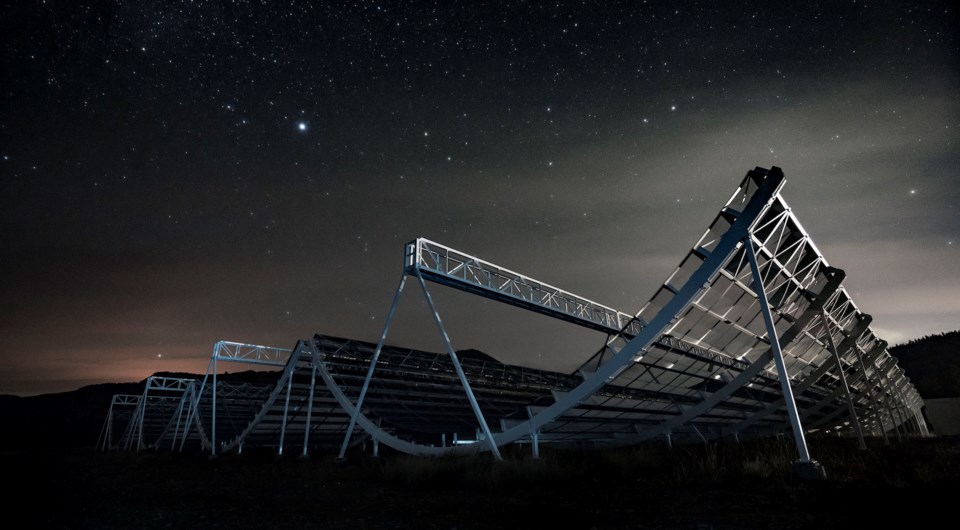The puzzling findings of a telescope designed and built by scientists at the University of British Columbia are being shared with the greater astronomical community for further analysis.
The Canadian Hydrogen Intensity Mapping Experiment, or just CHIME for short, was built in collaboration with UС����Ƶ, McGill University, the University of Toronto, the Perimeter Institute for Theoretical Physics and the National Research Council of Canada. Starting operation in 2018 the CHIME radio telescope peered into space from its location in the mountains of С����Ƶ’s Okanagan Valley and has returned some curious results.
The CHIME telescope is tasked with finding fast radio bursts (FRBs) which were first observed in 2007. FRBs are brief and mysterious radio pulses that have been emanating from various and distant parts of the universe, and more recently within the Milky Way.
Pulses of energy from far outside our galaxy
Within one year, the CHIME detected 535 of these FRBs, quadrupling the number of known occurrences of the mystifying pulses of radio energy from far outside our galaxy.
Earlier this month scientists with the CHIME collaboration of the detected FRBs at a meeting of the American Astronomical Society.
“This catalogue marks a significant turning point in the FRB field,” says Bradley Meyers, a postdoctoral researcher at UС����Ƶ’s department of physics and astronomy and member of the CHIME collaboration. “There’s a huge amount of science that we can do with this catalogue, and I think a lot of it will be exploring ideas we haven’t even come up with yet.”
The expanded number of observations has helped researchers identify two very different types of bursts—those that repeat, and those that are one-offs. Only 18 FRB sources burst repeatedly, while the vast majority were one-offs. Repeaters look different, lasting slightly longer and emitting more focused radio frequencies than bursts from non-repeating FRBs.
Finding more FRBs
Kaitlyn Shin a CHIME member and a graduate student in MIT’s department of physics says before the telescope there was less than 100 total discovered FRBs.
“With all these sources, we can really start getting a picture of what FRBs look like as a whole, what astrophysics might be driving these events, and how they can be used to study the universe going forward,” Shin said.
Unlike traditional telescopes, CHIME has no moving parts. The telescope uses over a thousand antennas to record the information from all the radio waves falling across its surface. It is this design that enables the telescope to “look” in thousands of directions simultaneously.
“We’re extremely excited to share this catalogue with the rest of the FRB community,” says Deborah Good, a PhD researcher at UС����Ƶ physics and astronomy and CHIME member. “The story doesn’t end with the release of the catalogue. I know researchers around the globe are going to use this as the jumping-off point for really exciting analyses.”





